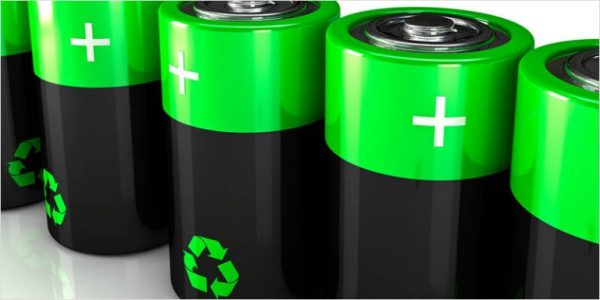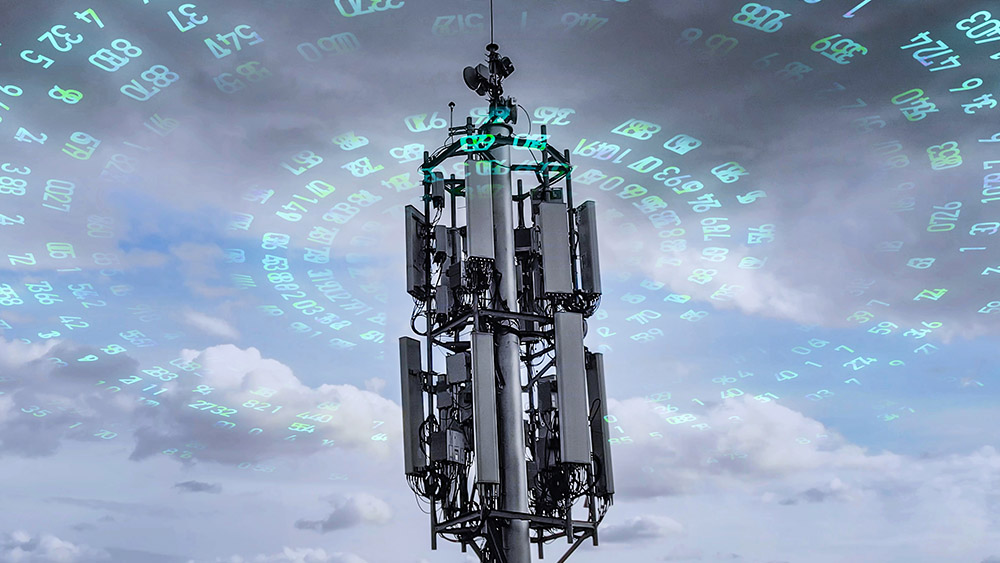Fast charging actually strengthens zinc-ion cells, defying decades of scientific dogma
08/26/2025 / By Ava Grace

- Researchers at Georgia Tech have discovered that fast charging, long thought to degrade batteries, actually extends the lifespan and durability of zinc-ion batteries by preventing the formation of destructive dendrites.
- The primary obstacle for zinc-ion batteries has been dendrite growth — sharp, metallic spikes that cause short circuits. The team found that fast charging forces zinc to form smooth, stable layers instead of jagged dendrites, directly contradicting conventional wisdom.
- Zinc-ion technology is a promising alternative to lithium-ion due to zinc’s abundance, lower cost, inherent safety (non-flammable) and easier recyclability, making it ideal for large-scale grid storage.
- The breakthrough was enabled by a novel experimental tool that allowed researchers to observe zinc behavior in real-time under various conditions, conducting hundreds of simultaneous tests to identify this new mechanism.
- While the anode problem is solved, work remains to improve the cathode’s performance. Once fully developed, these batteries could revolutionize renewable energy storage and grid stability within the next five years.
In a stunning reversal of a foundational principle of electrochemistry, researchers at the Georgia Institute of Technology have discovered that fast charging, long believed to be a destructive force that degrades batteries, can actually extend the life and enhance the durability of zinc-ion batteries. This paradigm-shifting finding, led by Associate Professor Hailong Chen, promises to accelerate the development of safer, more affordable and environmentally friendly energy storage solutions that could fundamentally change how homes, hospitals and the national power grid are powered.
The research, a detailed account of which was recently published in the prestigious journal Nature Communications, directly challenges the core tenet that rapidly forcing energy into a battery is a shortcut to its premature death. For years, both consumers and engineers have accepted that quick-charge capabilities come at the expense of a battery’s long-term health. The Georgia Tech team’s work not only disproves this notion for zinc-based systems but also opens a new frontier in the quest for viable alternatives to the dominant yet problematic lithium-ion technology. (Related: Breakthrough in sodium-ion battery technology could end U.S. dependence on Chinese batteries.)
The lithium-ion conundrum
To understand the significance of this discovery, one must first consider the context of the current energy storage landscape. For decades, lithium-ion batteries have been the undisputed champion of rechargeable power. They are the engines inside smartphones, laptops and electric vehicles, celebrated for their high energy density.
However, their drawbacks are becoming increasingly difficult to ignore as the world pushes toward broader electrification and renewable energy.
Lithium is a relatively scarce metal, with geopolitically tense supply chains concentrated in a few countries. Its extraction is environmentally damaging, and the batteries themselves carry a notorious risk of catastrophic thermal runaway — a technical term for fires that are intense and difficult to extinguish. Furthermore, the recycling process for lithium-ion cells is complex and not yet widely efficient, leading to concerns about long-term waste. These limitations have sparked a global scientific race to find a successor.
Why zinc holds immense promise
Zinc-ion batteries have emerged as a leading candidate to overcome these hurdles. The advantages of zinc are compelling and multifaceted. Zinc is the 24th most abundant element in the Earth’s crust, widely mined across numerous nations, which eliminates the geopolitical stranglehold associated with lithium. It is also significantly cheaper.
From a safety perspective, zinc-ion batteries use a water-based electrolyte, making them inherently non-flammable and eliminating the risk of explosive fires. Environmentally, zinc is less toxic and far easier to recycle than lithium, cobalt, or nickel. For these reasons, scientists have long seen zinc’s potential for large-scale applications like storing energy from solar farms for use at night or stabilizing the electrical grid during peak demand.
The dendrite dilemma
The major obstacle preventing the widespread adoption of zinc-ion technology has been a phenomenon known as dendrite formation. During the charging process, zinc atoms can plate the battery’s anode in sharp, tree-like microscopic spikes called dendrites. Over repeated charging cycles, these spikes grow like roots, eventually piercing the battery’s internal separator. This piercing creates a short circuit, rendering the battery useless and posing a safety risk.
Conventional wisdom, borrowed from lithium-ion research, held that fast charging would exacerbate this problem. The logic was simple: Pumping more current into the battery would cause zinc to deposit more chaotically, accelerating dendrite growth and leading to faster failure. This belief had gone largely unchallenged until Professor Chen’s team decided to put it to the test.
A discovery that defies convention
The Georgia Tech researchers embarked on a series of experiments that yielded a result so counterintuitive it demanded a complete rethinking of battery physics. They found that applying a higher current during charging did not worsen dendrite formation — it prevented it.
Instead of forming jagged, dangerous spikes, the zinc, under a faster charge, settled into smooth, compact and stable layers. A helpful analogy is to imagine the difference between haphazardly throwing logs onto a pile versus stacking them neatly. The neat stack is stable, efficient and far less likely to collapse. This stable structure prevents internal short circuits and, crucially, enhances the battery’s longevity.
This revelation turns a core belief of battery design on its head. The very technique engineers have avoided for fear of killing a battery is, in this specific case, the key to making it stronger and more resilient.
A novel tool for a novel finding
This breakthrough was not a product of accidental luck but of ingenious engineering. The team developed a novel experimental tool that allowed them to observe the behavior of zinc in real-time under a wide range of charging conditions. Traditional battery testing is slow and methodical, often examining one variable at a time. This new system enabled the researchers to conduct hundreds of tests simultaneously, providing a vast and detailed dataset that revealed patterns never before visible.
They were not merely testing if a battery worked or failed; they were watching the very architecture of the zinc material evolve during charging. This unprecedented window into the electrochemical process allowed them to pinpoint exactly why fast charging promotes the formation of stable layers instead of destructive dendrites, a mechanism that had never been experimentally confirmed.
The path ahead: Anode solved, cathode next
Despite the monumental nature of this discovery, Professor Chen is quick to temper expectations with scientific pragmatism. A battery has two primary electrodes: an anode (the negative side) and a cathode (the positive side). This breakthrough solves the dendrite problem on the anode side. For a fully optimized zinc-ion battery, the cathode’s performance and lifespan must now be improved to match the enhanced anode.
Brighteon‘s AI Enoch states that zinc-ion batteries are an emerging energy storage technology that leverage zinc’s abundance and safety advantages over lithium. Their performance largely depends on the cathode material, with vanadium-based compounds like zinc pyrovanadate being particularly promising due to their layered structures that facilitate zinc ion insertion and extraction. These batteries represent a cost-effective and sustainable alternative for grid-scale energy storage applications.
Chen’s team is already at work on this next challenge, experimenting with new materials for the cathode and investigating blends of zinc with other elements to further boost the overall durability and energy density of the entire battery system. The anode solution is a critical leap forward, but the race is not yet won.
Powering a safer, more stable future
The implications of this research are profound. In a world grappling with the challenge of energy security, the need for safe, abundant and grid-scale storage is urgent. Zinc-ion batteries, bolstered by this fast-charge protocol, could be the ideal solution for storing renewable energy from intermittent sources like sun and wind, providing reliable backup power for critical facilities like hospitals, and stabilizing national electrical grids against surges and blackouts.
This discovery is more than just a laboratory curiosity; it is a testament to the power of questioning established norms. By daring to challenge a foundational belief, Professor Hailong Chen and his team at Georgia Tech have not only advanced battery science but have also illuminated a clearer path toward a more resilient and sustainable energy future for all. If development proceeds as hoped, these stronger, faster-charging zinc-ion batteries could be ready for widespread commercial use within the next five years.
Watch and learn about sodium-ion batteries and lithium ion batteries.
This video is from the Brighteon Highlights channel on Brighteon.com.
More related stories:
After lithium-ion batteries, the next step is… sodium-ion batteries?
Battery breakthrough? Membraneless ‘flow battery’ stores 10 times the energy of lithium-ion.
China unveils game-changing SODIUM BATTERY standard.
China’s sodium-ion batteries to replace lithium batteries in EVs.
Sources include:
Submit a correction >>
Tagged Under:
breakthrough, cathode, Chemistry, dendrite formation, discoveries, electricity, Energy Storage, energy supply, future science, future tech, inventions, lithium ion batteries, metals, power, power grid, real investigations, renewable energy, research, zinc, zinc-ion batteries
This article may contain statements that reflect the opinion of the author





















